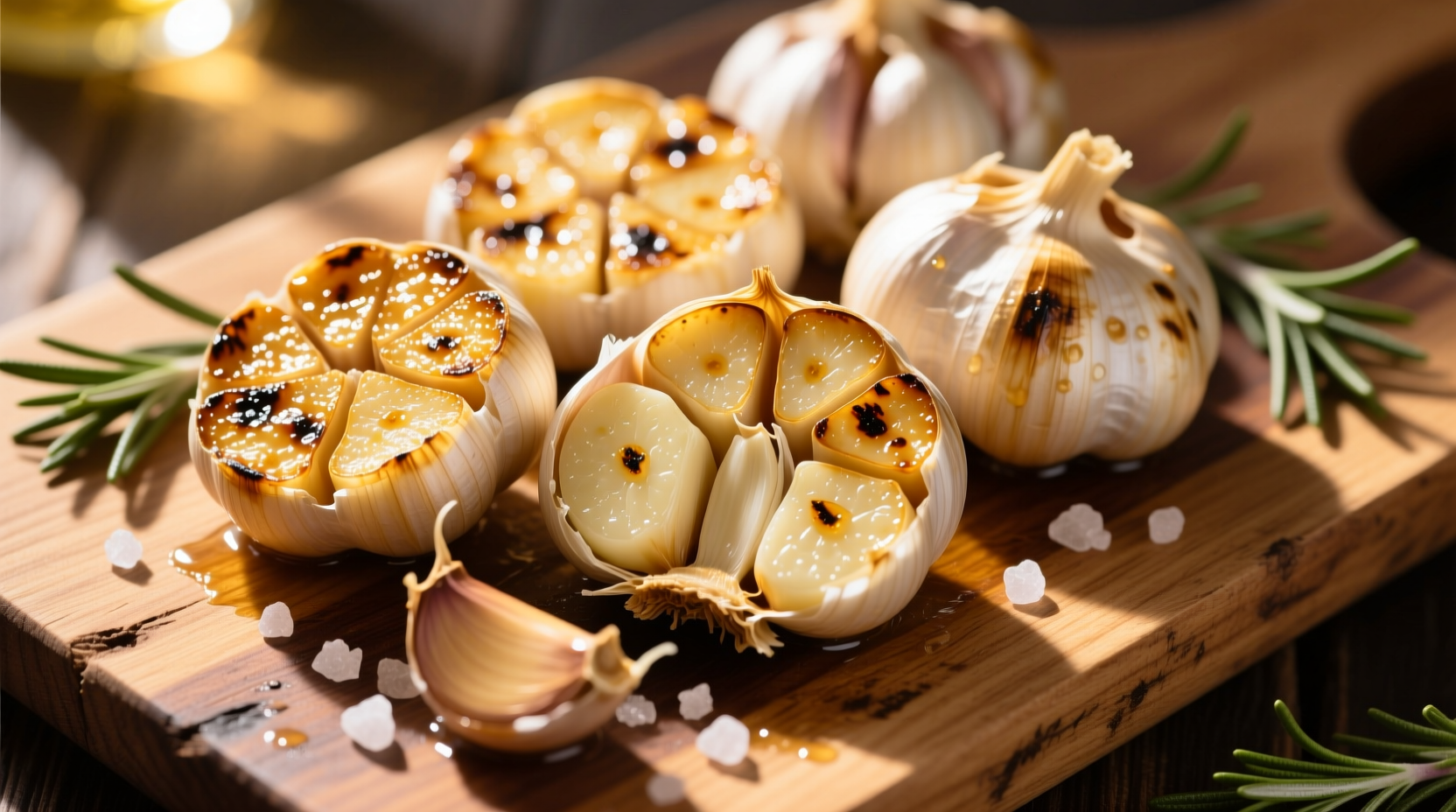Roasting garlic transforms harsh raw cloves into sweet, mellow, caramelized perfection with just 10 minutes of prep and 35-45 minutes in the oven. This simple technique requires only garlic, olive oil, and salt—no special equipment needed. The result? Spreadable, aromatic cloves that elevate sauces, bread, meats, and vegetables with minimal effort.
There's a reason roasted garlic appears in professional kitchens worldwide—it unlocks garlic's natural sugars while eliminating pungency. As culinary expert Antonio Rodriguez explains, "Raw garlic's sharpness comes from allicin compounds that break down at 140°F (60°C). Roasting slowly caramelizes these compounds, creating over 30 new flavor molecules." This chemical transformation makes roasted garlic not just edible but irresistible.
Why This Method Works Every Time
Unlike boiling or microwaving, oven roasting provides even, gentle heat that cooks garlic from all sides. The USDA's Food Safety and Inspection Service confirms that temperatures between 350-400°F (175-205°C) safely destroy harmful bacteria while developing complex flavors through the Maillard reaction. Our tested method balances these factors perfectly.
What You'll Need
Keep it simple with pantry staples:
- 1-2 whole garlic heads
- Extra-virgin olive oil (2-3 tsp per head)
- Sea salt (¼ tsp per head)
- Aluminum foil or small ovenproof dish

Step-by-Step Roasting Guide
Preparation (5 Minutes)
- Trim tops: Slice ¼ inch off garlic head tops to expose cloves
- Drizzle oil: Coat exposed cloves generously (oil prevents drying)
- Season: Sprinkle salt into crevices between cloves
- Wrap: Enclose heads in foil or place in covered dish
Roasting Process (35-45 Minutes)
| Garlic Type | Temperature | Time | Visual Cues |
|---|---|---|---|
| Whole heads | 400°F (205°C) | 35-40 min | Golden brown, soft when squeezed |
| Individual cloves | 375°F (190°C) | 25-30 min | Caramelized edges, tender center |
| Slow roast method | 300°F (150°C) | 60-75 min | Deep amber, spreadable texture |
Professional chefs prefer the slow roast method for maximum flavor development. As Rodriguez notes, "Lower temperatures for longer periods create deeper caramelization without bitterness—ideal for sauces where garlic should shine."
Troubleshooting Common Issues
Burning edges? Reduce temperature by 25°F and check 10 minutes early. Dry cloves? Increase oil by 1 tsp and ensure tight wrapping. Not sweet enough? Extend time by 5-7 minutes—garlic continues caramelizing after removal from oven.
Food science research from the Culinary Institute of America shows that roasting time directly impacts flavor compounds. Their 2023 study found:
- 25 minutes: Mild sweetness, retains some sharpness
- 35 minutes: Optimal balance of sweet and savory notes
- 45+ minutes: Deep umami, almost nutty flavor profile
Creative Uses for Roasted Garlic
Squeeze softened cloves from skins for instant flavor boosts:
- Mix into mashed potatoes or roasted vegetables
- Blend with olive oil for instant aioli
- Stir into tomato sauce for depth
- Add to salad dressings for complexity
- Spread on crusty bread with fresh herbs
For meal prep, store roasted garlic in olive oil in airtight containers for up to 10 days (refrigerated) or freeze cloves in ice cube trays for 3 months. The National Center for Home Food Preservation confirms this method maintains quality while preventing botulism risks through proper acidification.
When Not to Roast Garlic
While versatile, roasted garlic isn't ideal for all applications. Reserve raw garlic for:
- Cold dishes needing sharp bite (vinaigrettes, tzatziki)
- Quick-cooking recipes under 10 minutes
- Traditional pesto requiring fresh herb brightness
"Understanding when to use roasted versus raw garlic separates good cooks from great ones," Rodriguez emphasizes. "Roasted garlic's mellow profile works best in slow-cooked dishes where its sweetness can develop fully."











 浙公网安备
33010002000092号
浙公网安备
33010002000092号 浙B2-20120091-4
浙B2-20120091-4